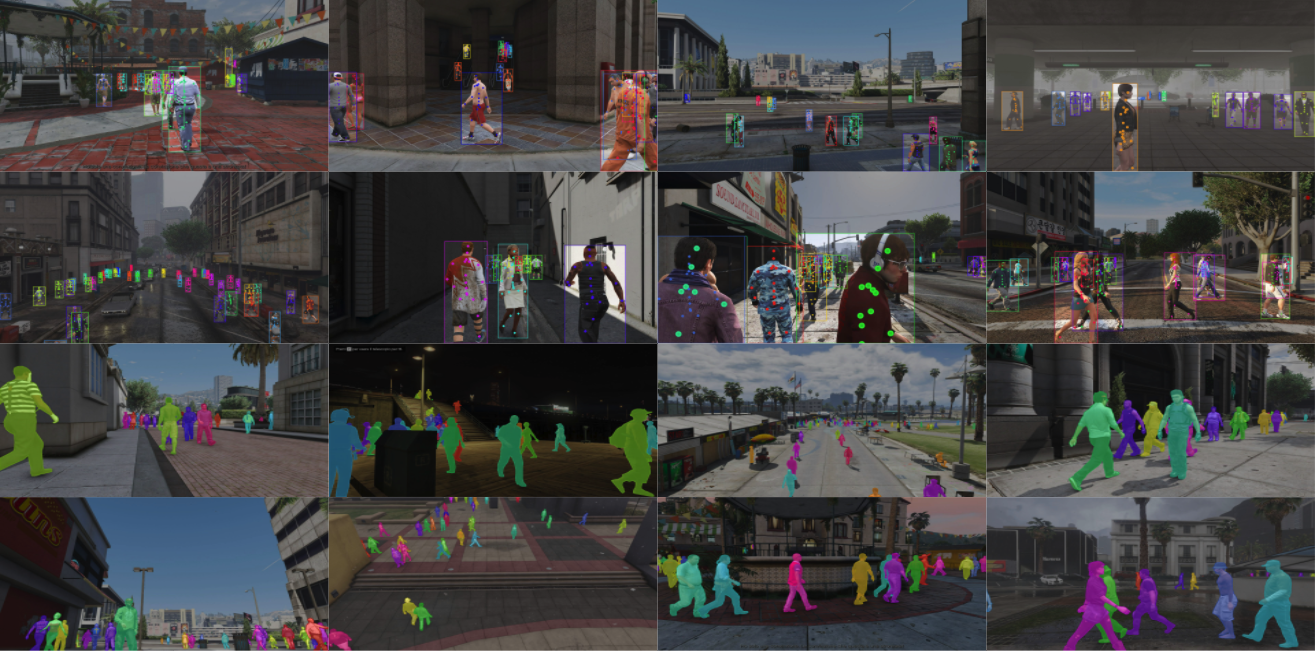MOTSynth: How Can Synthetic Data Help Pedestrian Detection and Tracking?
Deep learning-based methods for video pedestrian detection and tracking require large volumes of training data to achieve good performance. However, data acquisition in crowded public environments raises data privacy concerns -- we are not allowed to simply record and store data without the explicit consent of all participants. Furthermore, the annotation of such data for computer vision applications usually requires a substantial amount of manual effort, especially in the video domain. Labeling instances of pedestrians in highly crowded scenarios can be challenging even for human annotators and may introduce errors in the training data. In this paper, we study how we can advance different aspects of multi-person tracking using solely synthetic data. To this end, we generate MOTSynth, a large, highly diverse synthetic dataset for object detection and tracking using a rendering game engine. Our experiments show that MOTSynth can be used as a replacement for real data on tasks such as pedestrian detection, re-identification, segmentation, and tracking.
PDF Abstract ICCV 2021 PDF ICCV 2021 Abstract




 ImageNet
ImageNet
 MS COCO
MS COCO
 Market-1501
Market-1501
 MOT17
MOT17
 CrowdHuman
CrowdHuman
 JTA
JTA